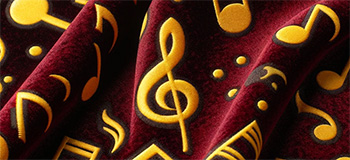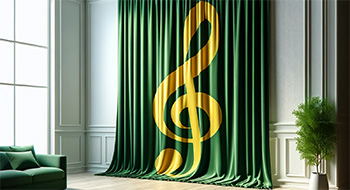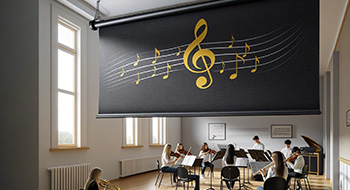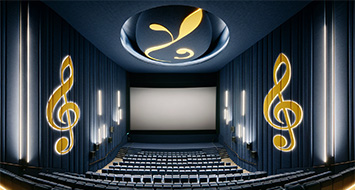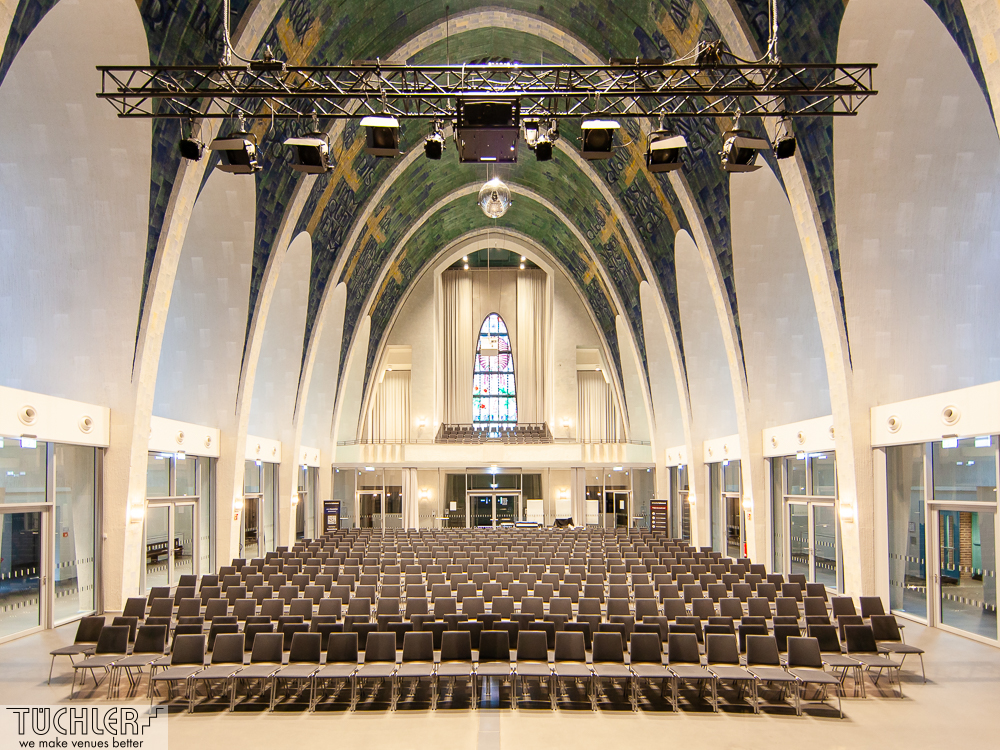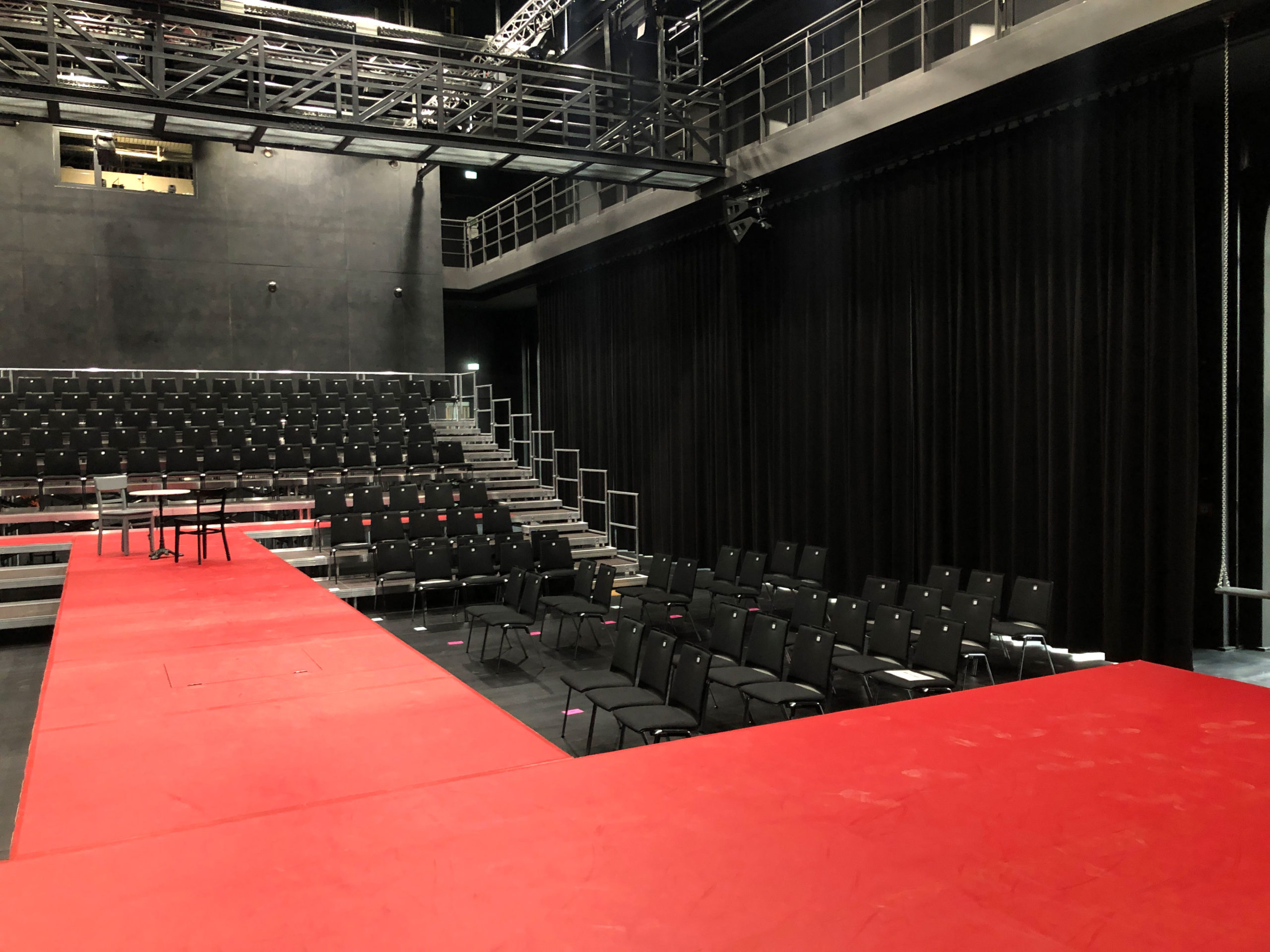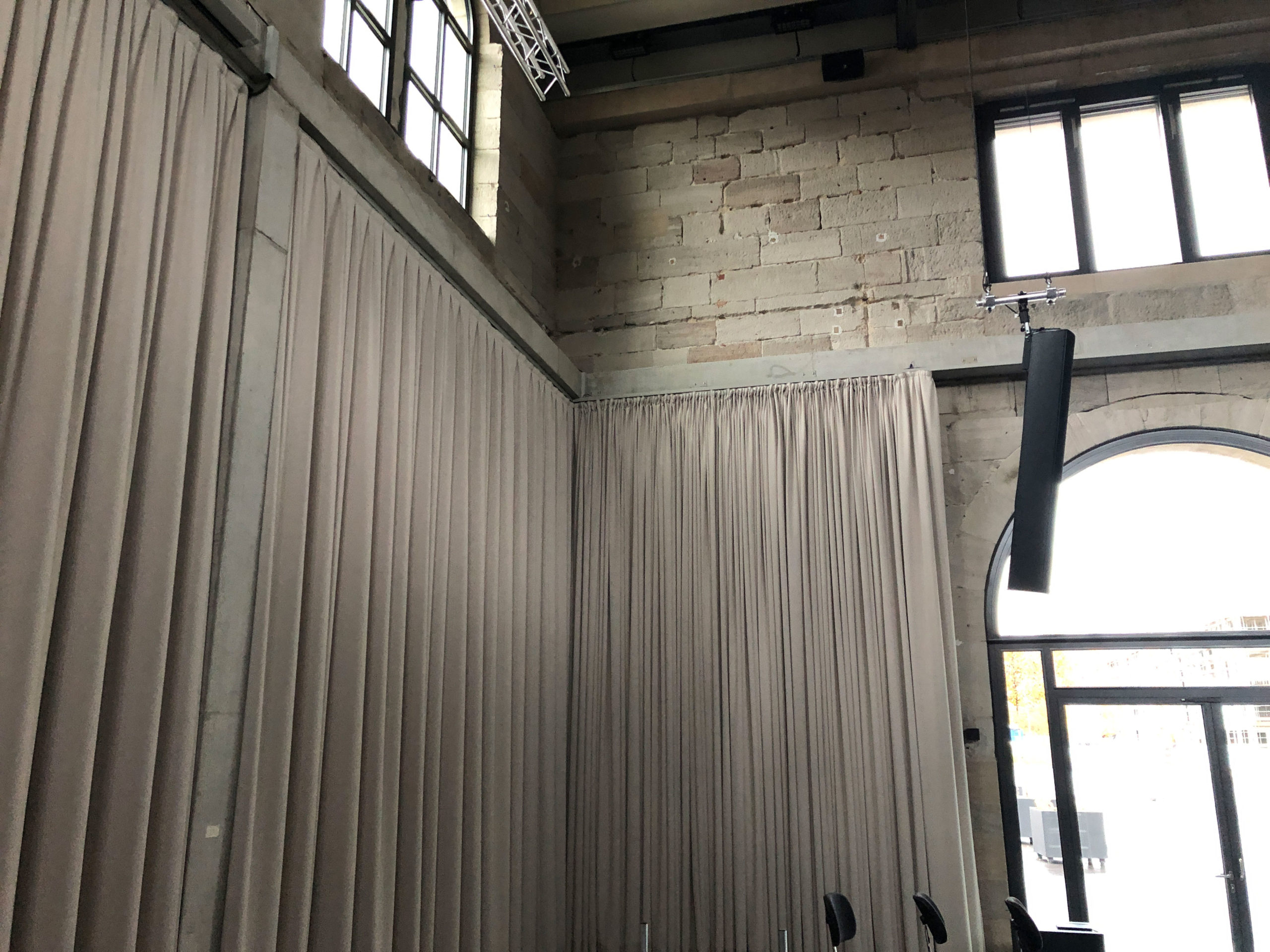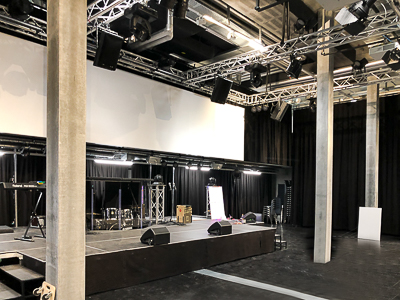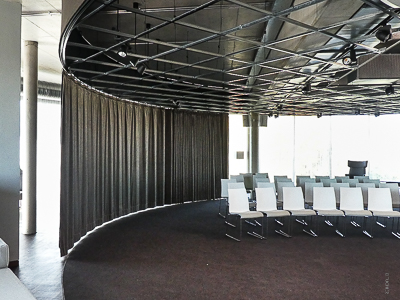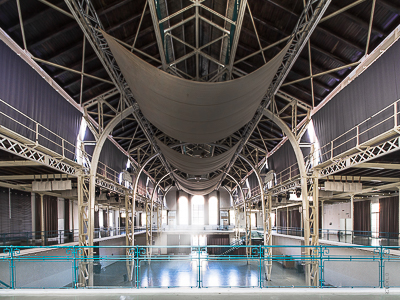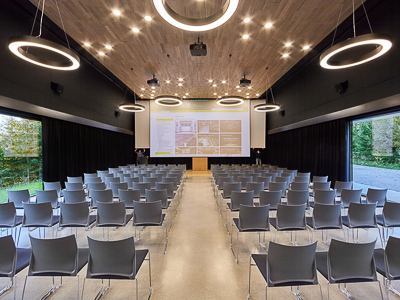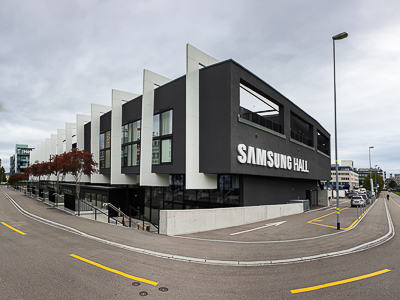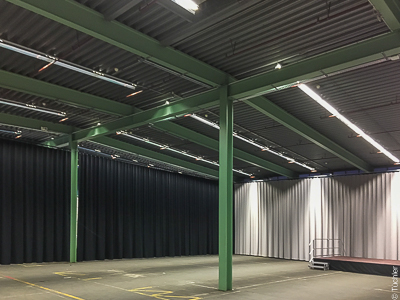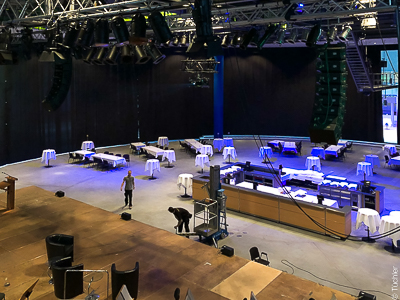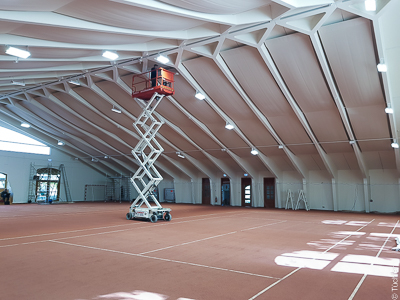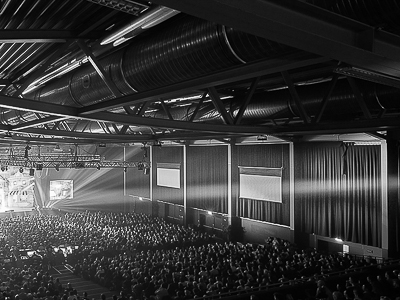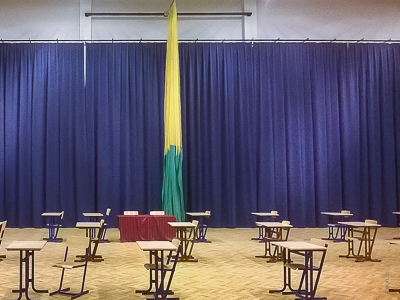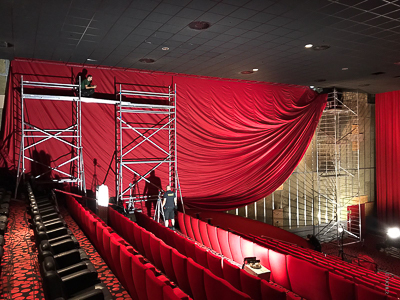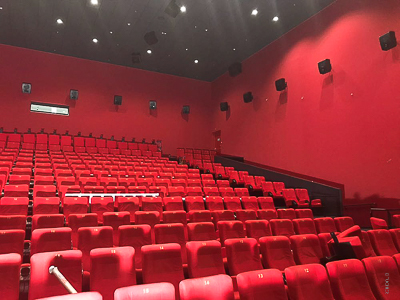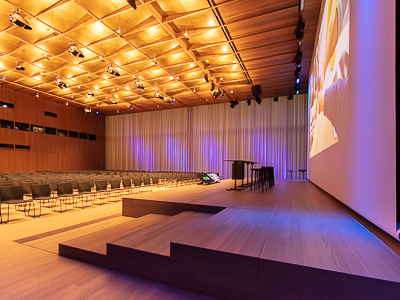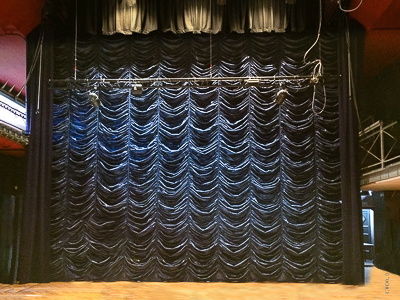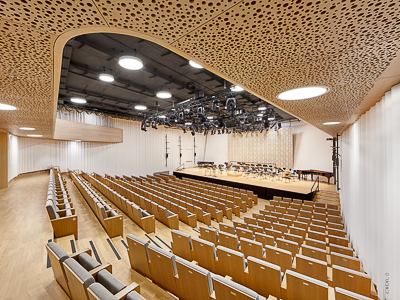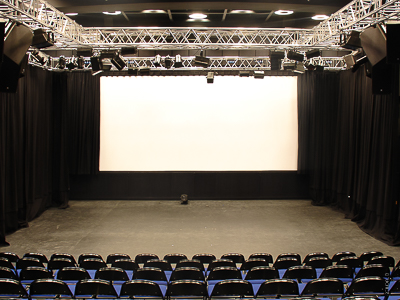

Acoustics, sound transmission, reverberation time, optimise your room acoustics
Adapt your room acoustics with our acoustic curtains, - materials and dynamic acoustic blind systems. : Discover Solutions for all sound requirements.
For more than three decades, TÜCHLER has been producing made to measure solutions, which transform event locations into an oasis of good sound. Our comprehensive understanding of acoustics, reverberation time and sound transmission form the basis of our extensive product portfolio, specially designed to master every acoustic challenge.
Wide areas of application
Our range of acoustic curtains, -materials and dynamic blind systems adapt to diverse surroundings. Whether you want to acoustically optimise a concert hall, a theatre, a classroom or a modern office, we have the experience and the technology to fulfil your requirements. Every product combines aesthetic design and technical perfection, aimed at not only improving acoustics but also enriching the in its entirety.
Acoustic curtains: Harmony in style and function
Discover our specially designed acoustic curtains, which absorb sound, reduce reverberation time and also add visual elegance. Available in many colours and materials, our curtains offer a flexible and attractive solution for acoustic challenges and help to improve the hearing experience in every room.
Acoustic materials: Quality you can hear
Our acoustic materials are certified to the highest standards and offer effective sound absorption and attenuation. With a broad palette of materials and textures, our materials offer precise adaption to the acoustic properties of your room and at the same time, are an aesthetic highlight.
Dynamic acoustic blind systems: Change the acoustics at the push of a button
Experience the next level of room acoustics with our acoustic blind systems. This innovative solution allows you to dynamically adapt the acoustic properties of a room, ideal for multi-purpose rooms that require flexibility. Easy to use and efficiently effective, our blind systems are the answer to constantly changing requirements in modern rooms.
Commitment to specific know-how and innovative solutions:
You too can trust TÜCHLER's extensive experience and specialised knowledge in improving room acoustics. Become one of our satisfied clients, who rely on our specific expertise to optimize their room design.
Every project begins with individual advice, so that we understand your requirements and visions. From there, we accompany you step by step, up to the final installation. Discover made to measure acoustic solutions with us, combining functionality, aesthetics and innovative technology, to revolutionize your room acoustics experience, according to our motto: Together we make venues better.
FAQs about ACOUSTICS AND SOUND
- What are room acoustics and why are they important?
- Room acoustics refer to how sound interacts and is experienced in an indoor room. They are decisive for the sound quality in event locations, theatres, offices and further rooms, as they directly influence the hearing experience and speech intelligibility.
- What is the alpha(w) sound absorption coefficient?
- Alpha(w) is a measure for the total absorption of a material at different frequencies, by EN ISO 354 norm definition. It helps to determine how effectively a material can absorb sound and is often used to assess the suitability of acoustic materials.
- What is the difference between sound absorption and sound transmission?
- Sound absorption refers to the capability of a material to absorb sound waves and reduce reverberation time. Sound permeability describes how well sound can pass through a material, this is particularly relevant for room dividers and -insulation.
- What does reverberation time mean and how does it influence room acoustics?
- Reverberation time, often called RT60, is the time it takes for sound to decay by 50 decibels after the sound source has been turned off. It is a critical aspect of room acoustics, as it directly influences the clarity and intelligibility of the sound. Too long reverberation time in a concert hall or theatre can lead to a blurry and smeary sound, whereas too short reverberation time can make the room seem dry and lifeless. The ideal reverberation time depends on how the room is used:
- Concert halls for classical music: Typically, a longer reverberation time is preferred, approx. 1.8 to 2.2 seconds, to produce a rich and full sound.
- Rock- or pop- concert arenas: A shorter reverberation time is often aimed for, approx. 1.5 to 1.8 seconds, to maintain musical clarity and also a certain warmth.
- Speakers’ rooms or classrooms: A significantly shorter reverberation time is required, ideally between 0.6 and 1.0 seconds, to ensure speech intelligibility.
- Recording studios: These rooms often have an even shorter reverberation time, to create a controlled sound environment.
- Which norms apply to acoustic materials and -curtains?
- Acoustic materials like fabric and curtains are often certified according to EN ISO 354 for the degree of absorption and to EN13773 or EN13501 for flame resistance. These norms ensure that the products meet certain safety and performance standards.
- How can I measure and rate the acoustics in a room?
- Room acoustics can be measured by various methods, including acoustic measurements of the reverberation time, noise level measurements and frequency analytics. Professional acoustic technicians use these techniques to identify problem areas and suggest specific improvements.
- What is sound transmission and how is it rated?
- Sound transmission describes how sound is transmitted from a room through a wall or another obstruction into another room. Rating is usually in dB(A), a measure for the perceived noise level. Materials with a low sound transmission value (high dB(A) attenuation) are effective sound absorbers and are used in construction acoustics. If curtains are not used to reduce reverberation time, but like our multi-layer sound separation curtains, which prevent the noise of stage sets being changed reach the audience from the stage, dB(A) values are also decisive.
What are the standard values for attenuation?
- The sound absorption of high-quality entrance doors is often within the range of approx. 25 to 42 dB. Doors with higher attenuation are often labelled as soundproof doors and are made with special seals and use heavier materials.
- The sound absorption of standard windows can differ greatly, but is usually within the range of approx. 20 to 30 dB. The attenuation depends on factors like the number of panes of glass, the type of glass and the frame material.
- Sound proof windows are specially designed to provide higher sound insulation and can achieve an attenuation of 40 dB or more. Some particularly high-quality types achieve attenuation values of up to 45 dB or more. These windows often employ multiple glazing with specific distances between the sheets of glass, heavy foils and special frame constructions.
- How is sound absorbance measured and what does alpha(w) mean?
- Typically, sound absorption is measured according to the alpha(w) value, which indicates the sound absorption degree of a material. The value is between 0 (no absorption) and 1 (complete absorption), measured over a range of frequencies. Materials with high alpha(w) values are effective sound absorbers and significantly improve the acoustics in a room.
The relationship between the weighted sound absorption coefficient alpha(w) and sound absorbance classes.
| Alpha(w) value | sound absorbance class | absorbance degree |
|---|---|---|
| ≥ 0.90 | A |
very high absorbance |
| 0.80 ≤ αw < 0.90 | B | high absorbance |
| 0.60 ≤ αw < 0.80 | C | medium absorbance |
| 0.30 ≤ αw < 0.60 | D | low absorbance |
| 0.15 ≤ αw < 0.30 | E | very low absorbance |
| < 0.15 | Not classified | not classified |

